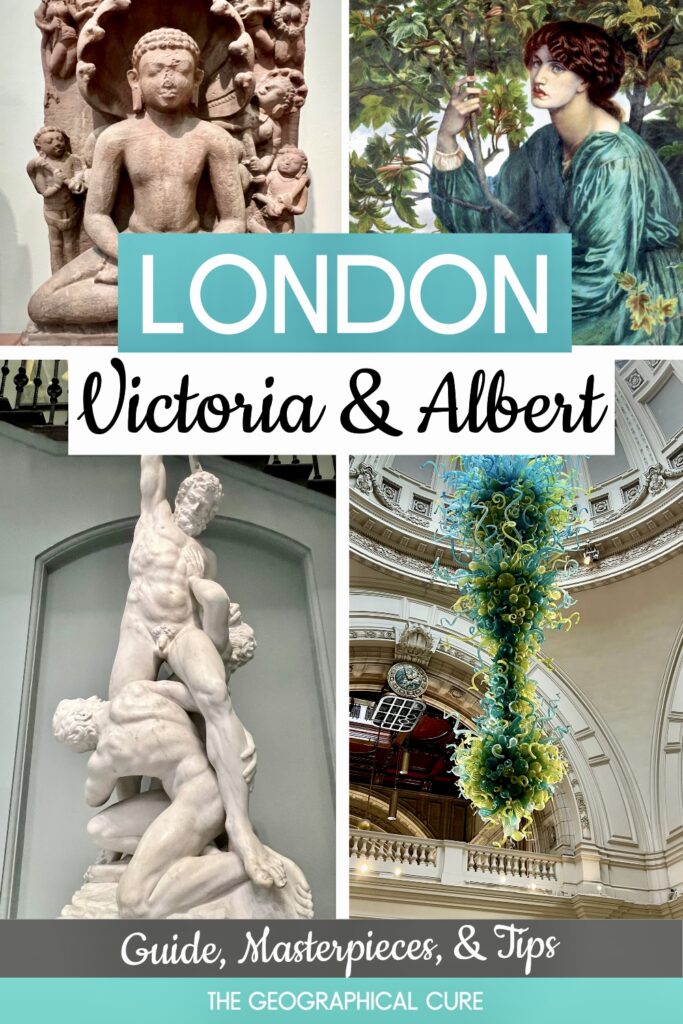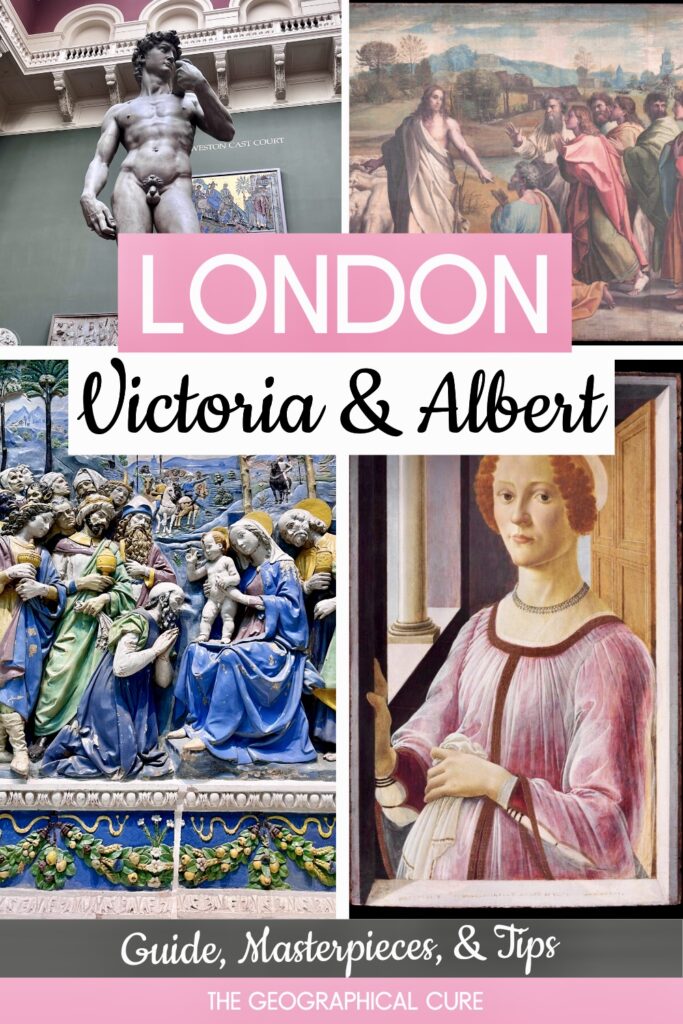“Welcome to 5,000 years of human ingenuity in art and design” says the map leaflet of the Victoria & Albert Museum. And that pretty much sums up the institution know universally as the V&A.
Along the 12 miles of corridors in the labyrinthian museum, a representative sample exists of every form of fine, decorative, and applied art known to man. Throw in a few historic artifacts and fine paintings, and you have a museum that has something for everyone.
It was Prince Albert’s vision for the 1851 Great Exhibition that generated the foundation of the V&A. After Albert’s death, Queen Victoria made many donations and the museum was named after the duo.
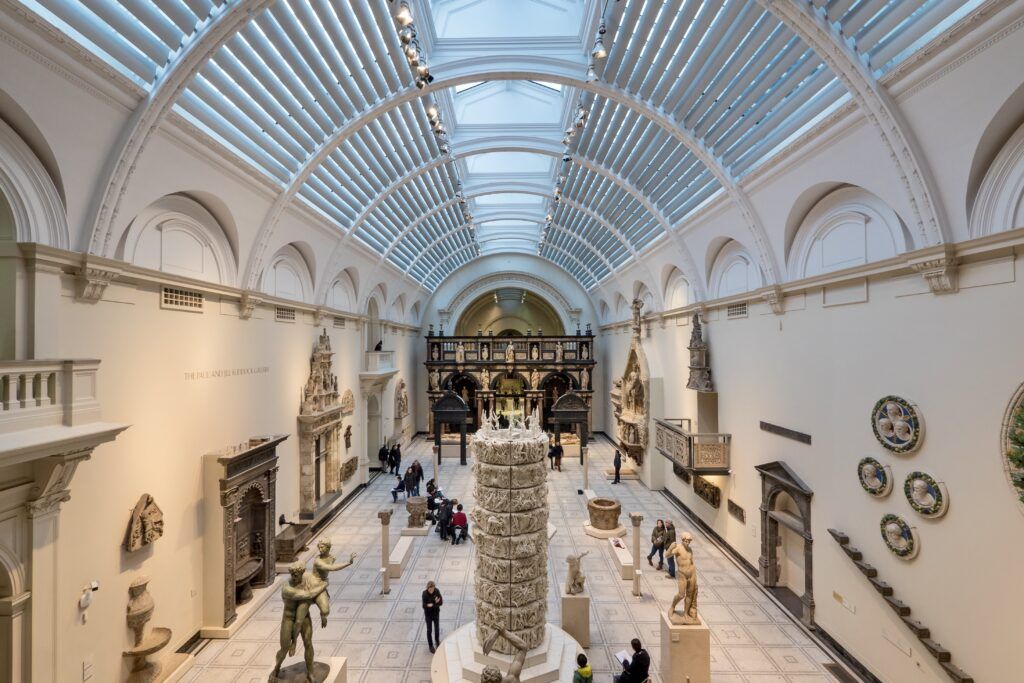
As a result, the V&A is now one of the world’s richest and most eclectic collections, curated in a thoughtful and evocative manner. On top of that, the museum is perfectly free to visit.
The V&A has six floors of galleries. You could spend days in this place.
Here’s a quick overview of the layout:
- Basement: Europe, Medieval & Renaissance art
- Ground Floor: Asian & Middle Eastern art, Cast Courts, Raphael Cartoons, fashion
- 1st Floor: British art 16th to 18th century, Medieval & Renaissance art
- 2nd Floor: design, metalwork, ironwork, mosaics, stained glass, and theater & performance
- 3rd Floor: British art 18th to 20th century, contemporary glass
- 4th Floor: furniture and ceramics
>>> Click here to book a guided tour of the V&A
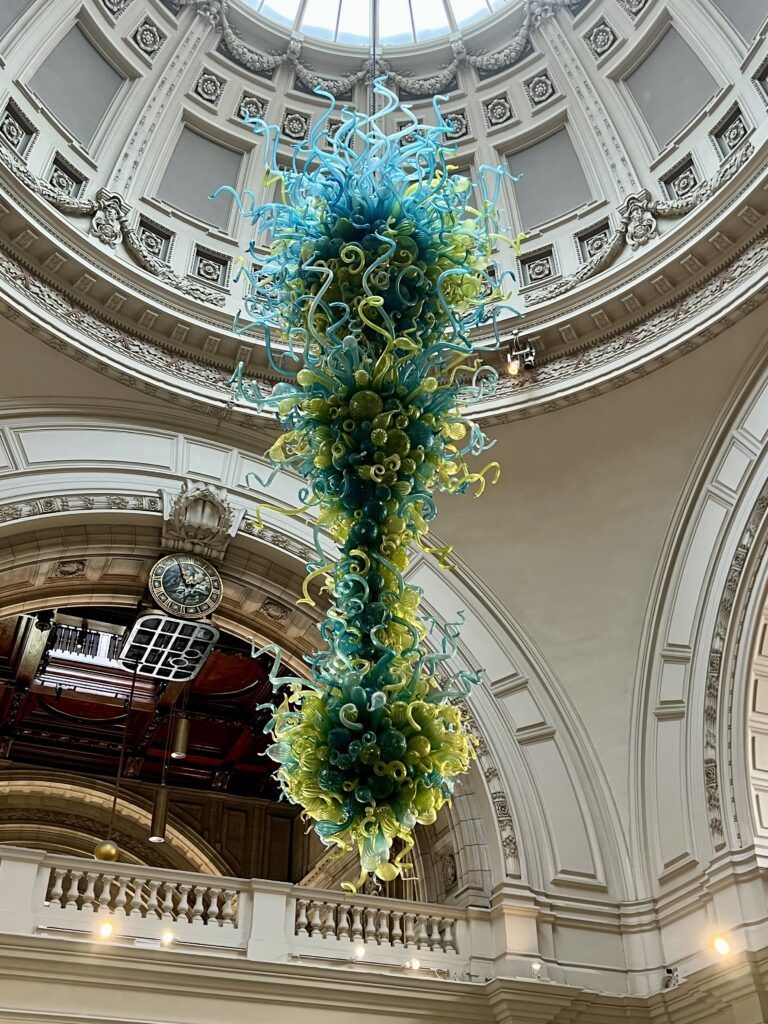
Guide To The V&A: What To See
Here are some of the can’t miss highlights of the V&A.
Dale Chihuly Chandelier
This gorgeous chandelier epitomizes the V&A. It’s a beautiful manufactured object that demonstrates immense technical skill and innovation ad blurs the line between arts and crafts.
Chihuly is the preeminent glass artist in the United States. He studied glass making in Venice. Each blue and yellow strand of the chandelier is tied with a wire to a central spine.
When the chandelier was installed in 2001, Chihuly fretted that it was “too small.” He had it disassembled and added more air bubbles.
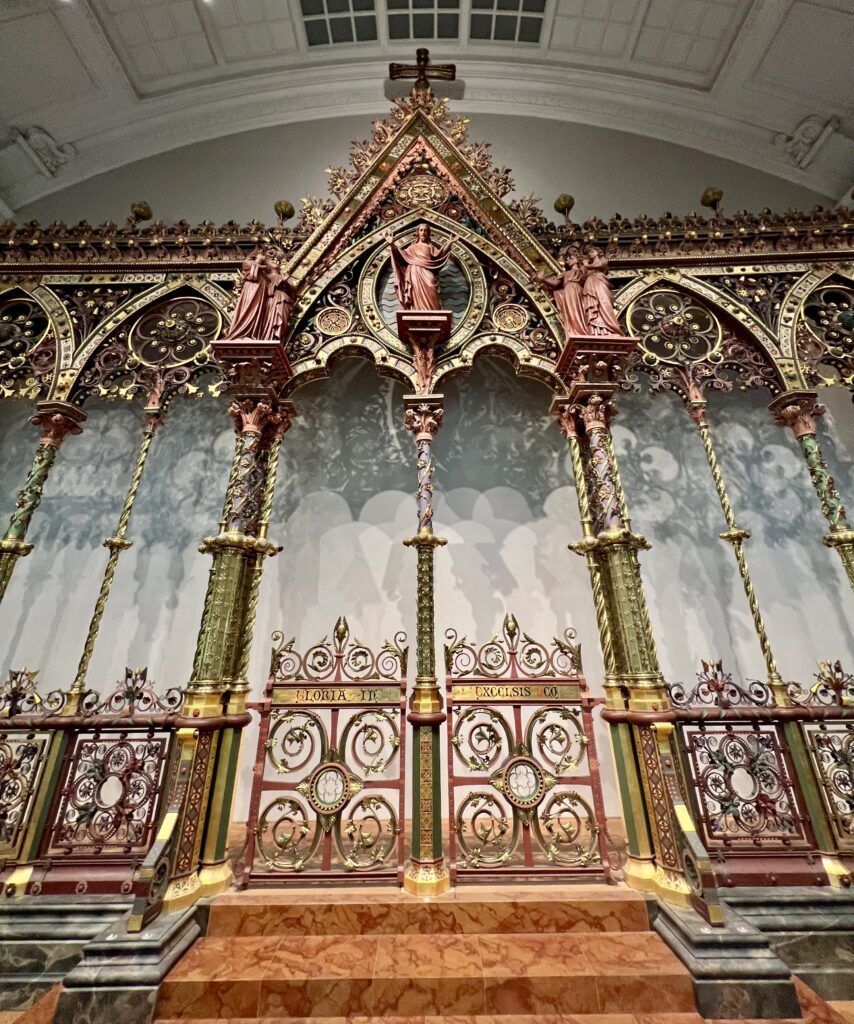
Hereford Screen
This is a 35 by 35 foot screen built for the high altar of Hereford Cathedral. It looks medieval, but it was actually part of a retro vibe during the Industrial Revolution.
It was built with all the technological innovations at the time. The entire project took 5 months instead of many years.
Sadly, though, a century later, Neo-Gothic was out and Modernism was in. The screen was ridiculed, and later brought to the V&A.
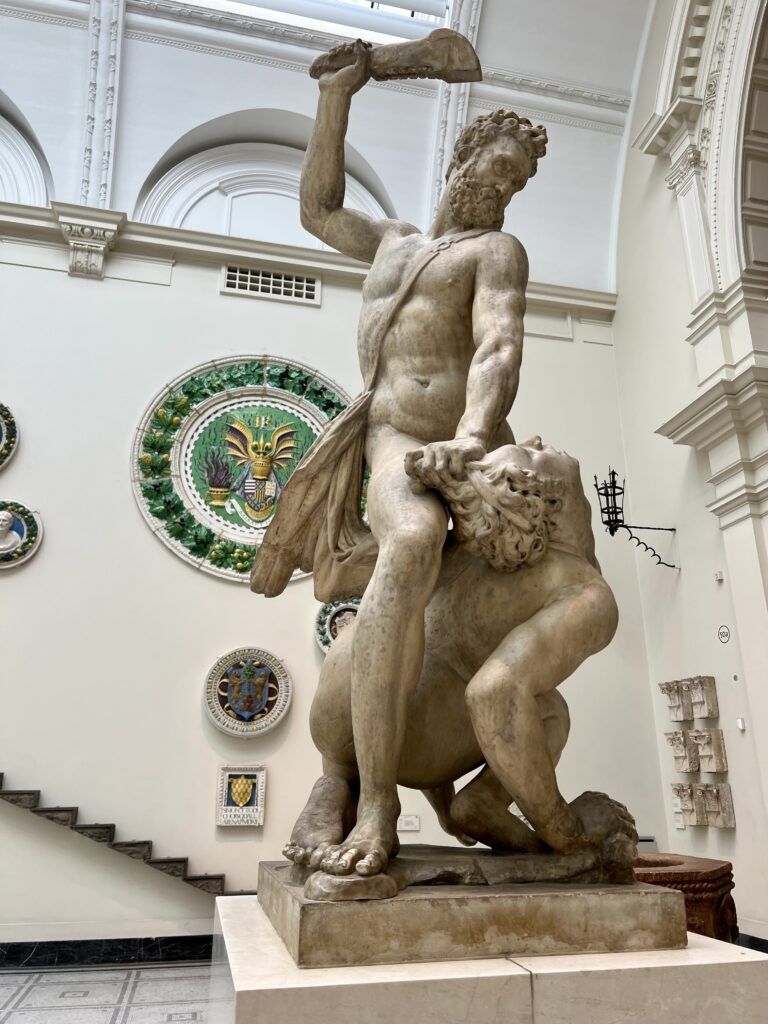
Giambologna, Samson Slayling a Philistine
This stunning spiraling statue was sculpted by the Florentine artist Giambologna. In Italy, he was second only to Michelangelo. This was his first major commission
The sculpture is 7 feet tall and displayed on a shoulder level plinth. it was carved out of a single block of marble. It shows a testy warrior leaning back and brandishing a weapon, preparing to decapitate the man who has insulted him.
Originally destined for a fountain in Florence, the sculpture instead made its way to London. And, indeed, the V&A has one of the best collections of Italian Renaissance sculpture outside Italy.
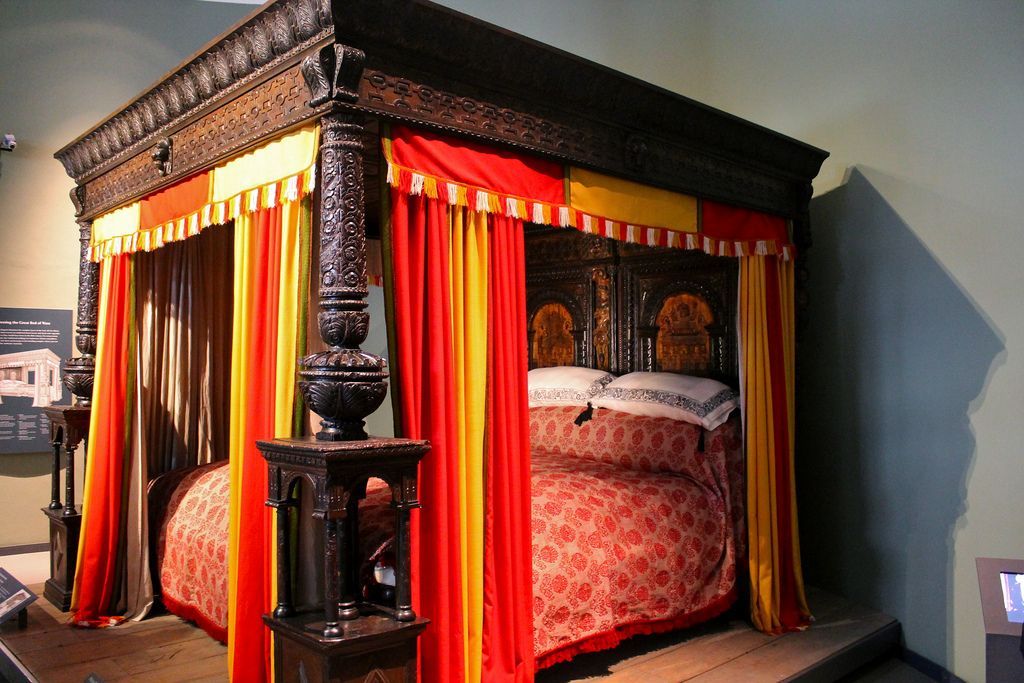
Great Bed of Ware
This immense 10 foot tall four poster bed has elaborate carvings and inlays. It was mentioned by Shakespeare in his play Twelfth Night.
The Great Bed of Ware was made in the town of Ware in the late 16th century. Its size made it symbol of the communal sleeping habits of the Elizabethan era.
Due to its size and communal nature, the bed became known for the humorous and sometimes ribald inscriptions left by travelers who slept in it.
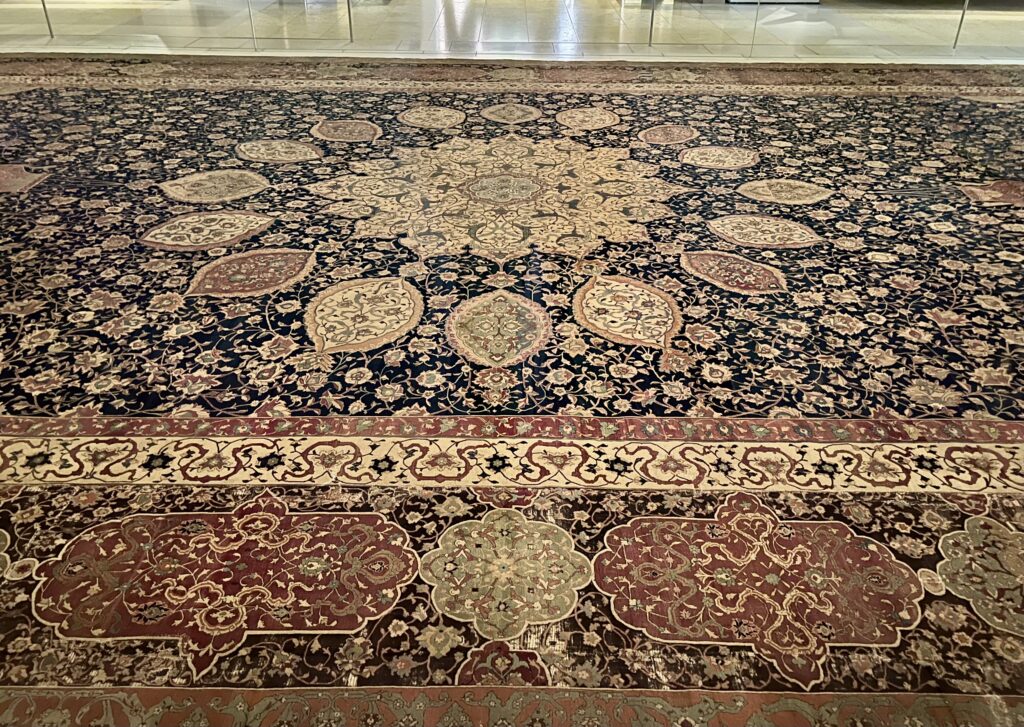
Ardabil Carpet
This carpet is the centerpiece of the Islamic Art exhibit. It’s one of the largest and finest carpets in existence.
It was commissioned by the then ruler of Iran, Shah Tahmasp, for a shrine. The date of completion is 1539-40.
The carpet was made on a silk warp and topped by a dense woodpile of 304 knots per square inch. It took a dozen workers a year to make.
The carpet is very dimly lit to preserve its color. But you can see it lit up for 10 minutes on the hour and half hour.
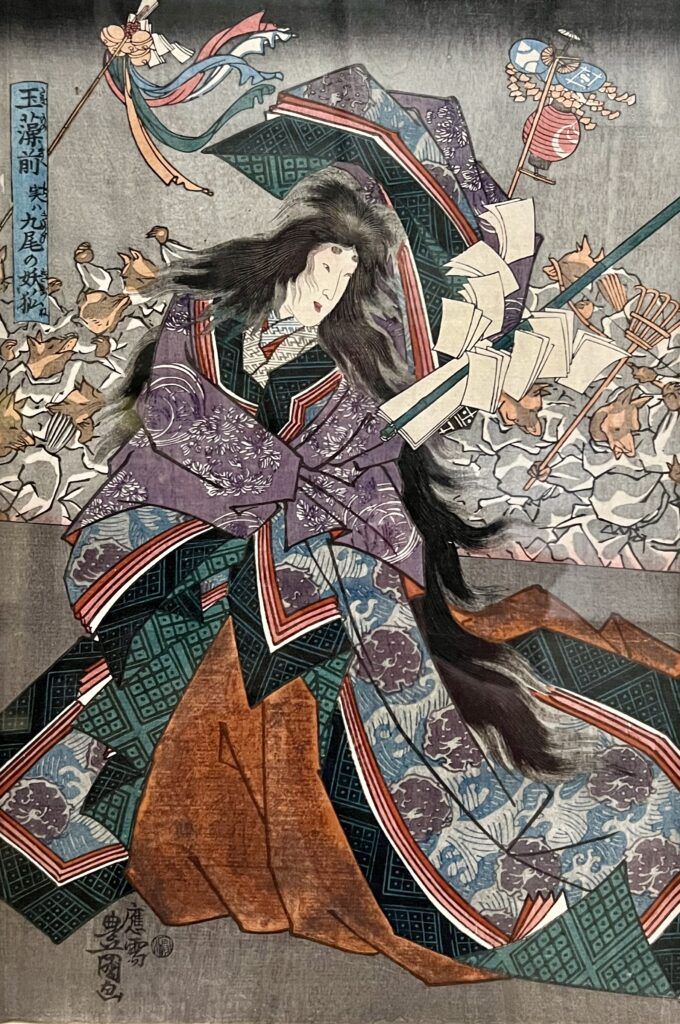
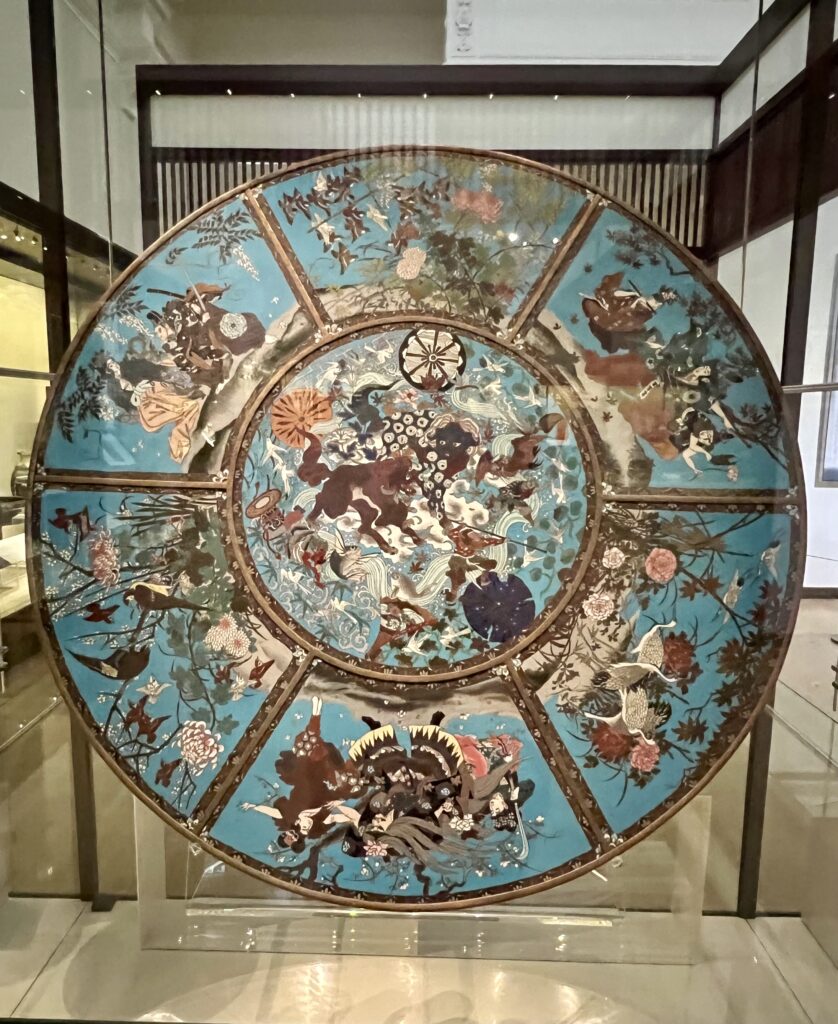
Asian Art
The V&A’s Asian collections span over 5000 years, ranging from 3,500 BC to the present.
This vast region includes China, Korea, Japan, South-East Asia (from Burma to Indonesia), South Asia (encompassing Pakistan and India), Central Asia (from Tibet to the Caspian Sea), and the Middle East.
One of the V&A’s particular areas of expertise is the art of South Asia. It boasts an unparalleled assemblage of almost 60,000 artifacts from countries such as India, Sri Lanka, Afghanistan and Nepal.
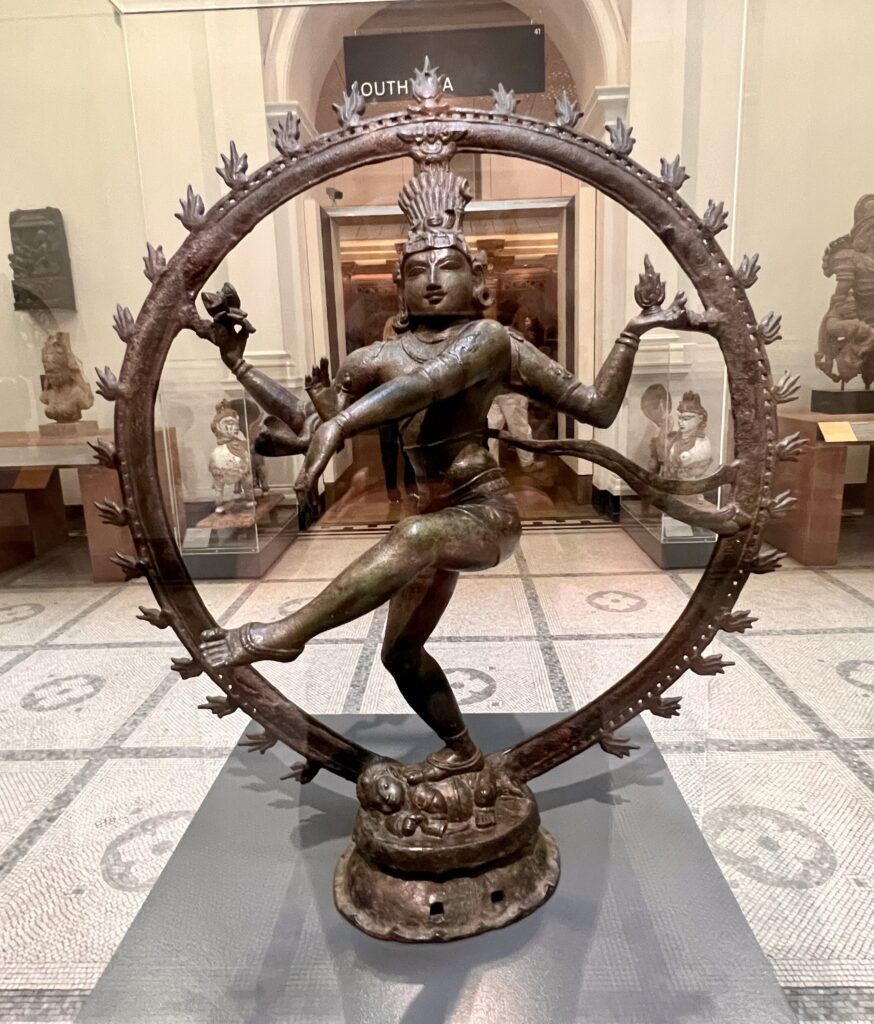
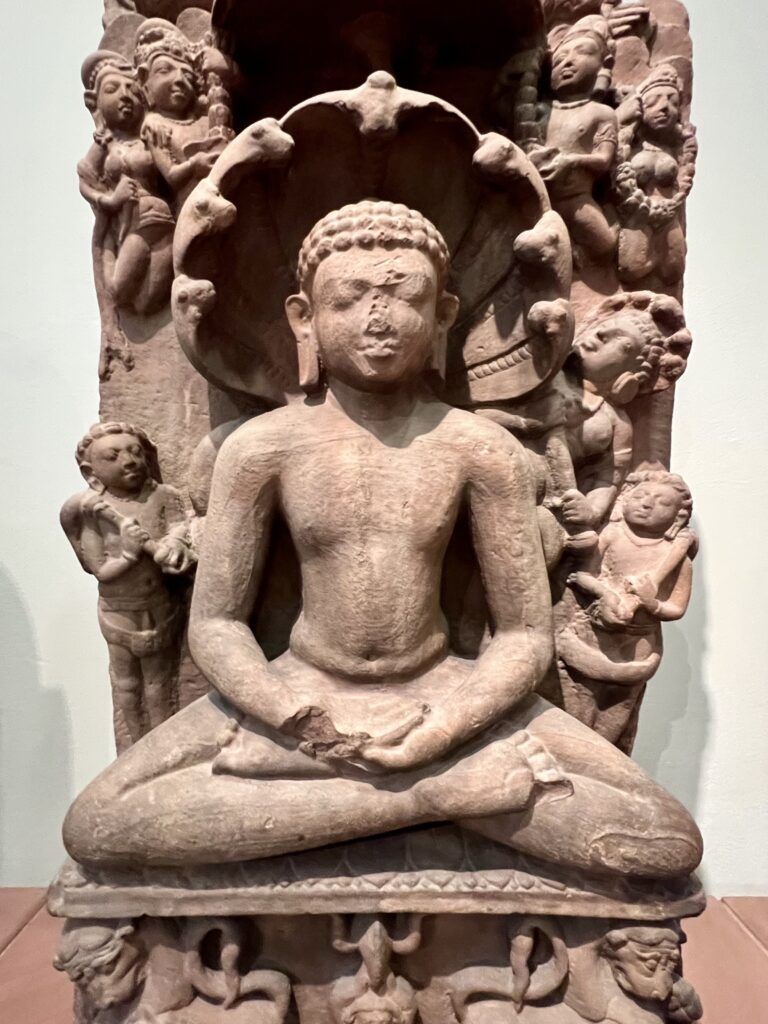
A highlight is the wine cup of Shah Jahan. It’s an intricately detailed white jade cup made for the 17th century Mughal emperor, who built the Taj Mahal.
I also loved the Shiva Natarja from the 12th century. It’s a bronze statue of the Hindu god who creates the world by dancing.
The sculpture is loaded with symbolism, about where humans come from and where we’re going. Surrounded by a ring of fire, Shiva crosses a leg in time with the music with a cobra draped over his arm.
READ: Guide To the Museum of Asian Art In Washington DC
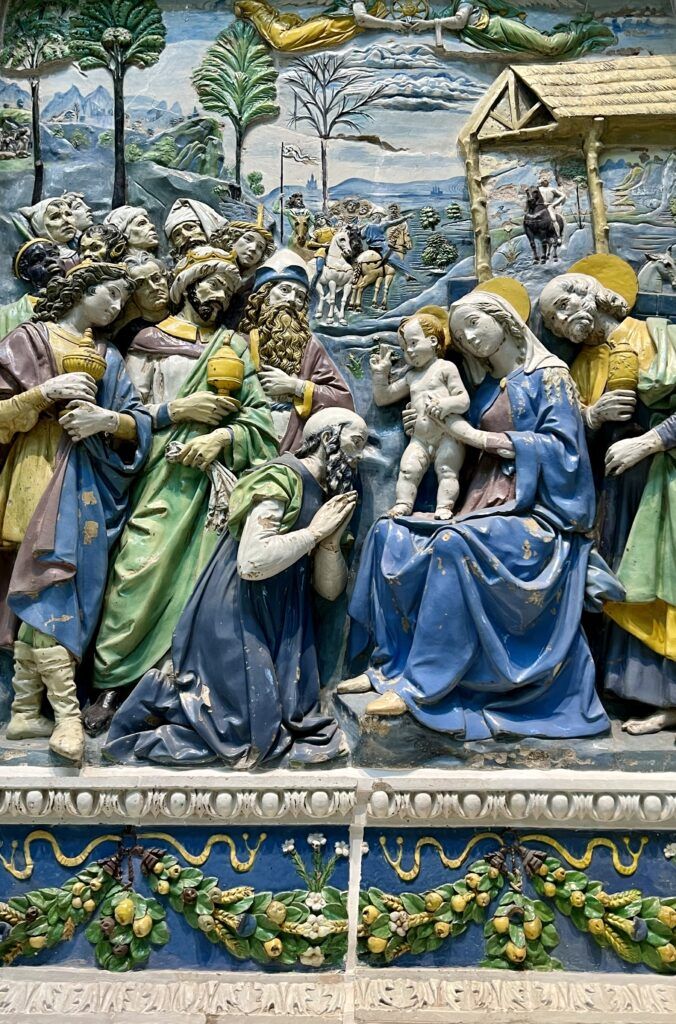
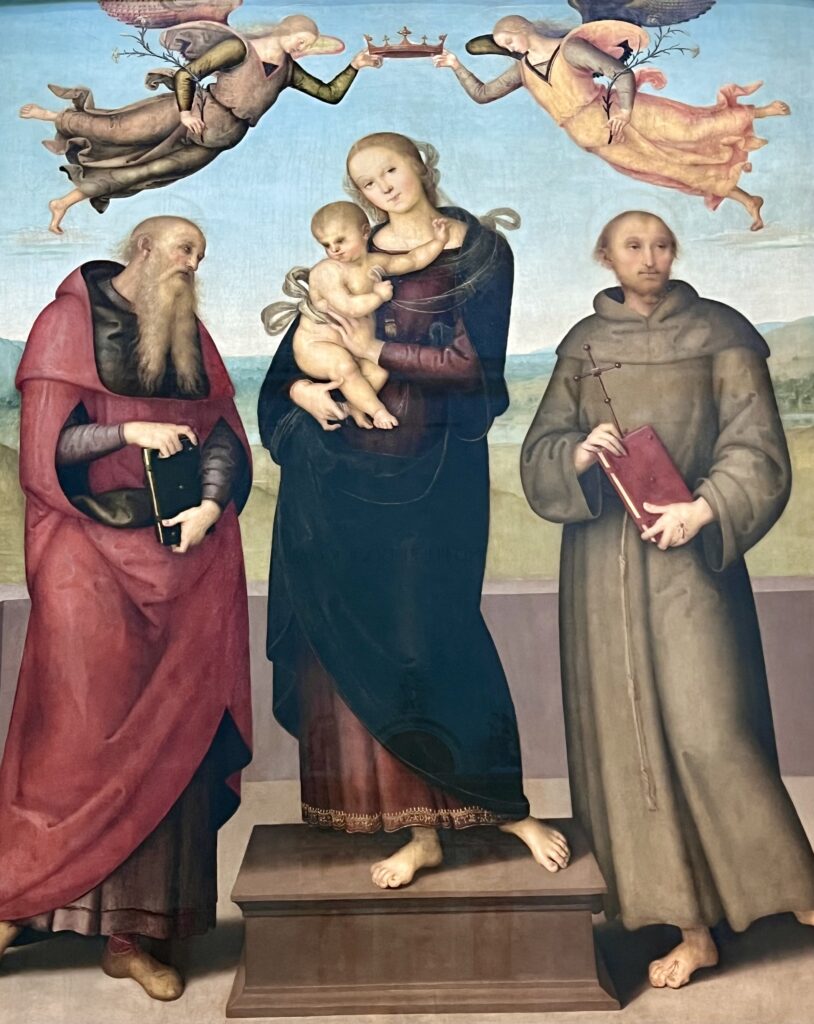
Medieval & Renaissance Galleries
In these galleries (spread over 3 floors), you can walk through 1,200 years of decorate arts from 300 to 1500. The ground floor “Renaissance City” is beautiful, massive, and well-lit space. It was my personal favorite gallery at the V&A.
There are ancient sculptures, altarpieces, reliquaries, stained glass, and choir screens. There are some beautiful paintings by Pietro Perugino and Sandro Botticelli, ceramics by della Robbia, and sculptures and reliefs by Donatello.
One of the most famous items is the Beckett Casket. It’s a blue and gold box made in Limoges that holds the mortal remains (relics) of St. Thomas Becket. He was murdered after clashing with King Henry II over matters of church and state authority.
Another must see is the Codex Forster III by Leonardo d Vinci. Leonardo was the total Renaissance man. He recorded his observations and inventions in tiny notebooks like this one. This one dates from when he lived in Milan, just before undertaking The Last Supper fresco.
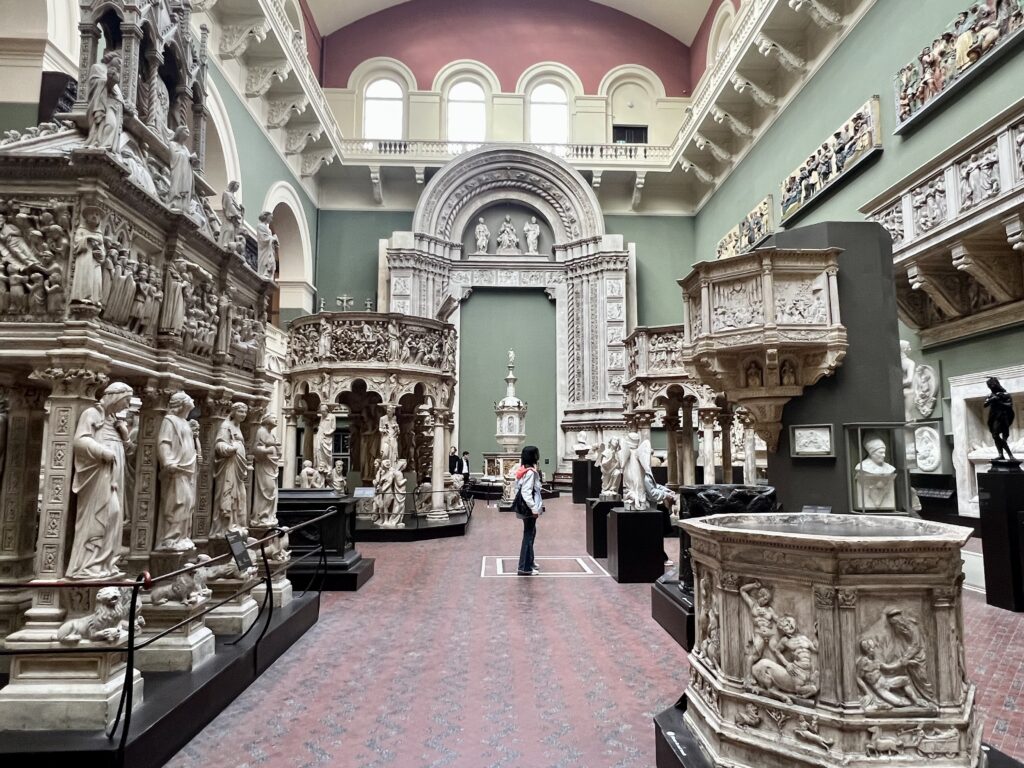
Cast Courts
Rooms 46A and B are filled with plaster casts of outstanding classical, ancient, and medieval artworks and architecture.
This type of collection was exceedingly popular in the late Victoria era, when museums aimed to educate the public.
The casts were created by master craftsmen. If the citizens of London couldn’t get to Europe, they could at least see what they were missing.
If you are a Michelangelo fan, you can follow Michelangelo’s entire career in these rooms.
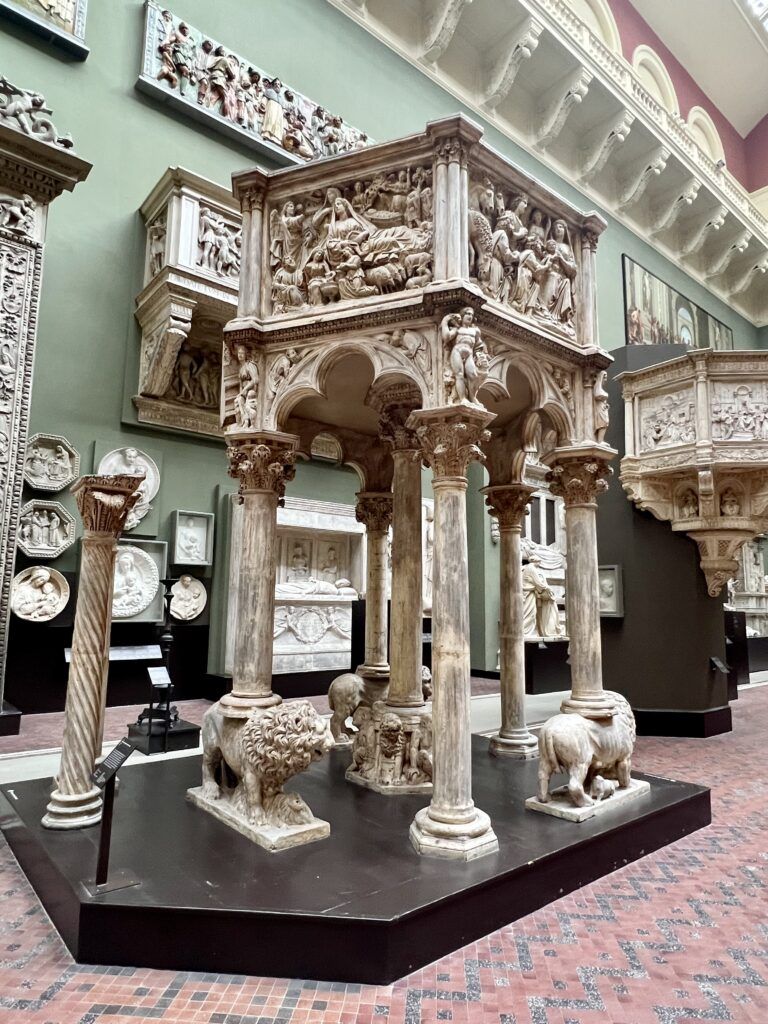
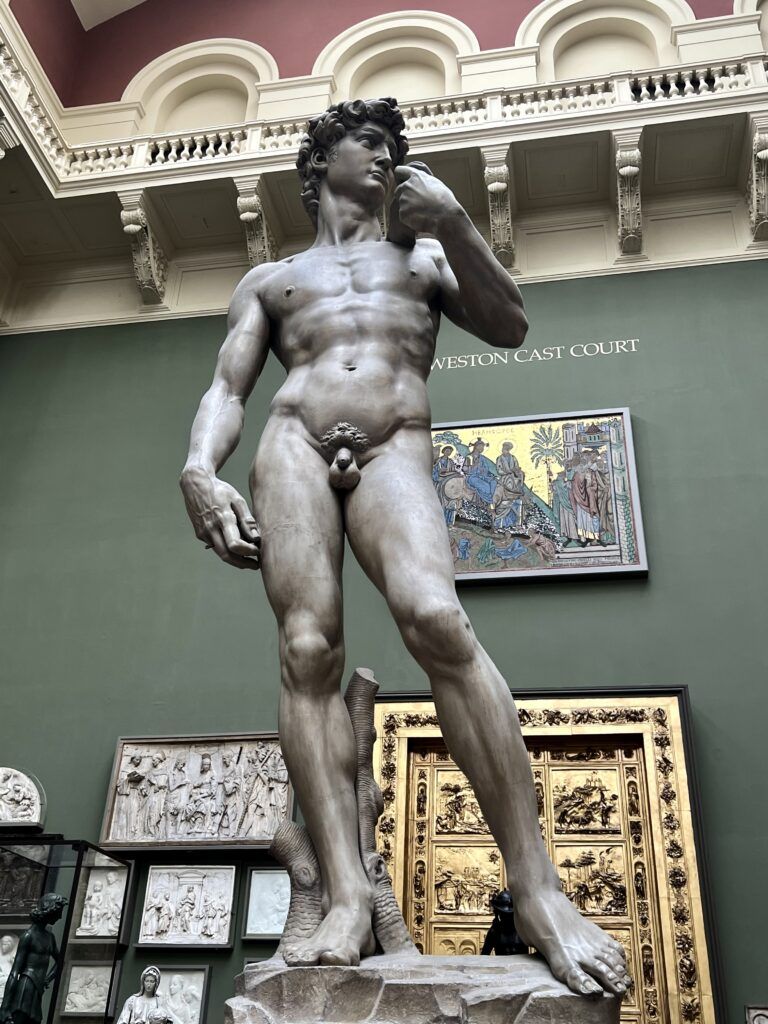
There are casts of his famous 17 foot tall David, Moses, the Dying Slave and Rebellious Slave, and the tomb sculptures for the Medici Chapels.
Just above the David, is a reproduction of Raphael’s most iconic painting, School of Athens, from the Raphael Rooms of the Vatican Museums.
Continuing on the Florentine Renaissance theme, you can also see Ghiberti’s bronze Baptistery doors, Donatello sculptures, and Pisano’s baptismal font from Pisa. For lovers of Ancient Rome, there’s even a replica of Hadrian’s Column.
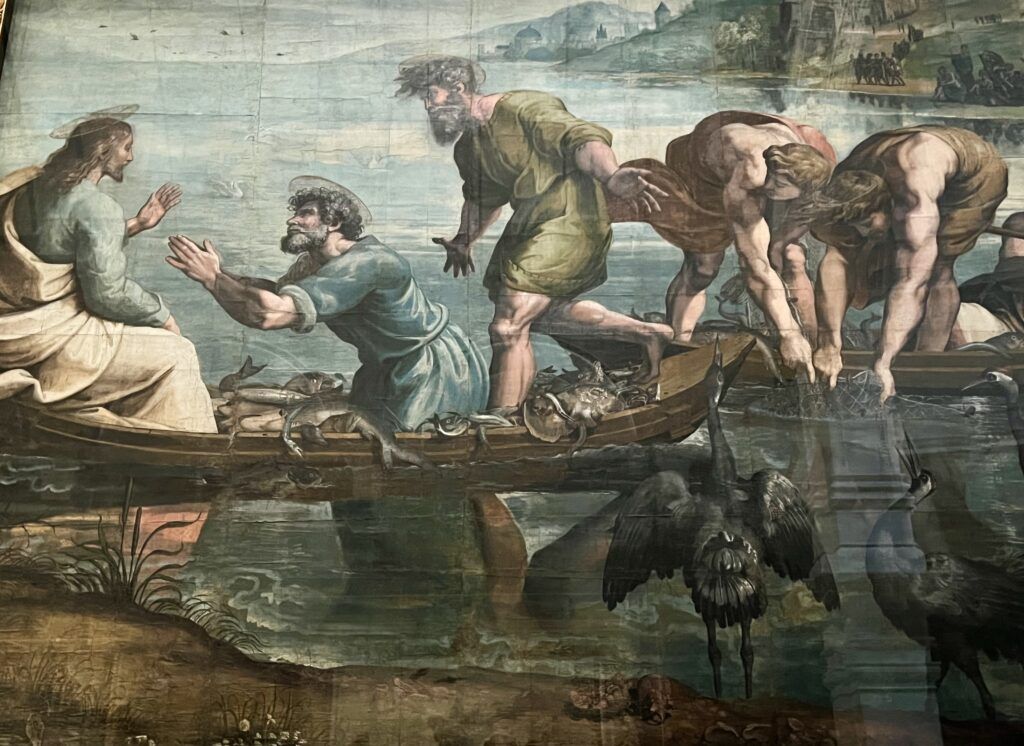
Raphael Cartoons
These cartoons are a set of large-scale designs by Raphael, commissioned by Pope Leo X for the Sistine Chapel. As the pope’s private chapel, it required the finest decoration.
Created between 1515-16, these great colored pictures cover almost 20 feet! They depict scenes from the lives of St. Peter and St. Paul in the New Testament.
The most spectacular one is the Miraculous Draught of Fishes.
In it, a flock of hungry cranes watches men straining at a bulging net. A wild haired Peter kneels before Christ in the bow of a small ship brimming with fish.
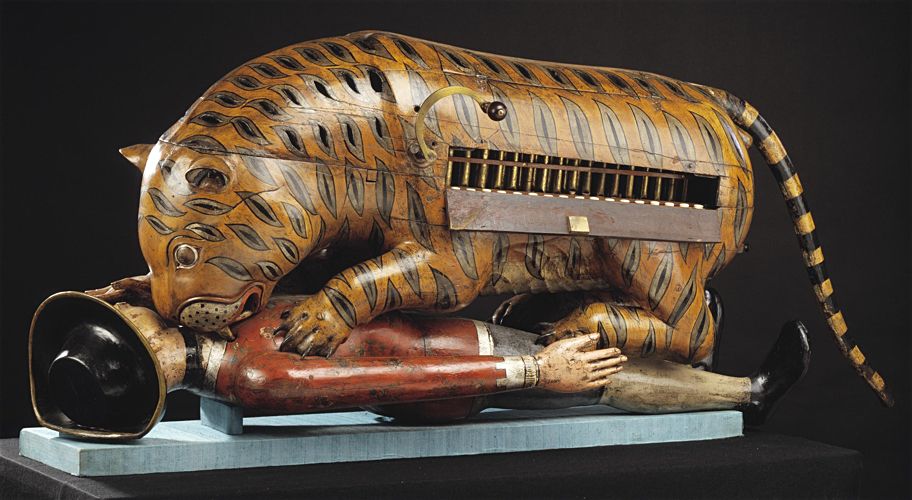
Nehru Gallery of Indian Art
This gallery is found in Room 41 on the ground floor (South Asia art). You’ll see dazzling jewelry, detailed gouache paintings, and a gold throne.
The most celebrated piece is Tipu’s Tiger. It’s a 3/4 life-size wooden tiger who’s devouring a European solider.
It’s not a real tiger but a unique mechanical toy made in the 1790s. What makes it special is that it’s also a musical instrument! When you turn a crank, it makes growling and wailing sounds, and the soldier moves his arm.
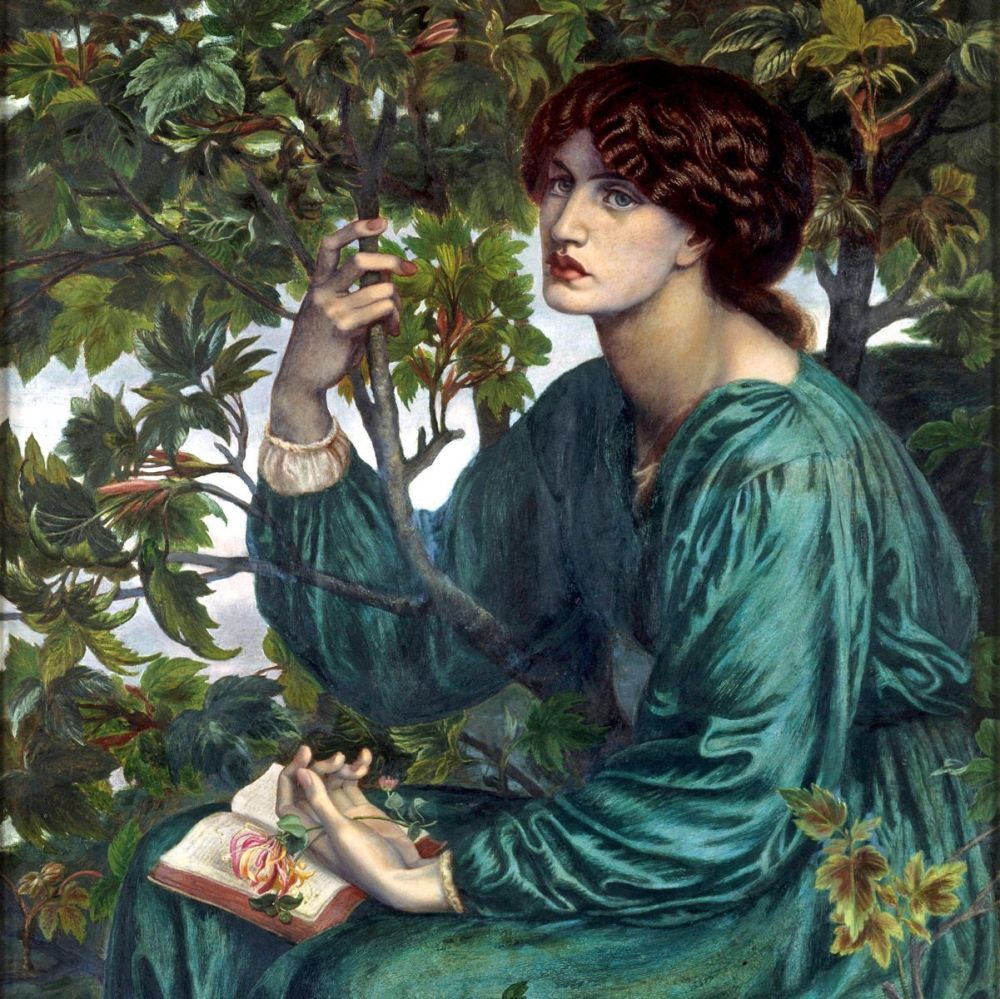
Rosetti, The Day Dream
If you’re a fan of the Pre-Raphaelite artists, you’ll want to see Rossetti’s gorgeous painting, The Day Dream. It’s in Room 81 on the second floor.
In this exquisite painting, Rosetta’s muse appears as a captivating vision in shades of teal green, nestled within a verdant sycamore landscape.
Jane’s gaze seems lost in contemplation, fixed upon a subject that has evidently ensnared her thoughts. Yet, one cannot help but wonder whether the daydream depicted here belongs to Jane or is a reflection of Rossetti’s own inner musings.
The landscape itself holds subtle symbolism, with the presence of honeysuckle — an emblem of love — perhaps alluding to the clandestine nature of their affair.
There are also some beautiful paintings at the V&A by the English artists John Constable and J.W. Turner.
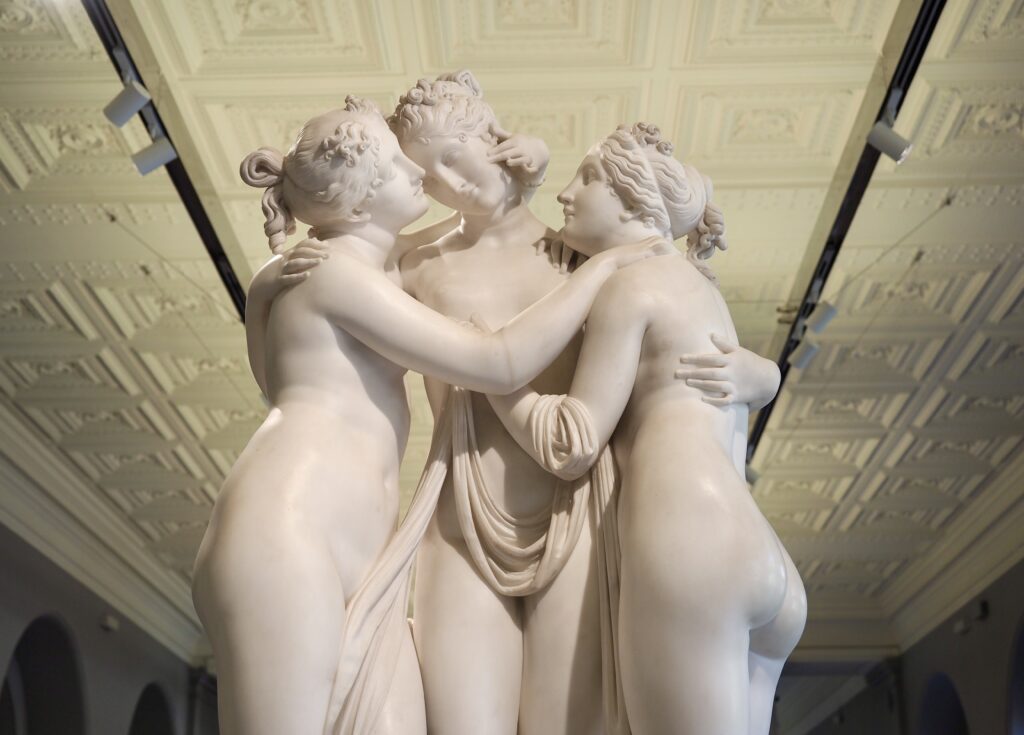
Antonio Canova, The Three Graces
Regarded internationally as a masterpiece of Neo-classical European sculpture, The Three Graces was carved in Rome by Antonio Canova between 1814 and 1817 for an English collector.
This group of three mythological sisters is in fact a second version of an original – one commissioned by the first wife of Napoleon Bonaparte.
The sculpture depicts the three daughters of Zeus, king of the gods. They represent charm, beauty, and creativity. The graces are intertwined in a dance-like composition.
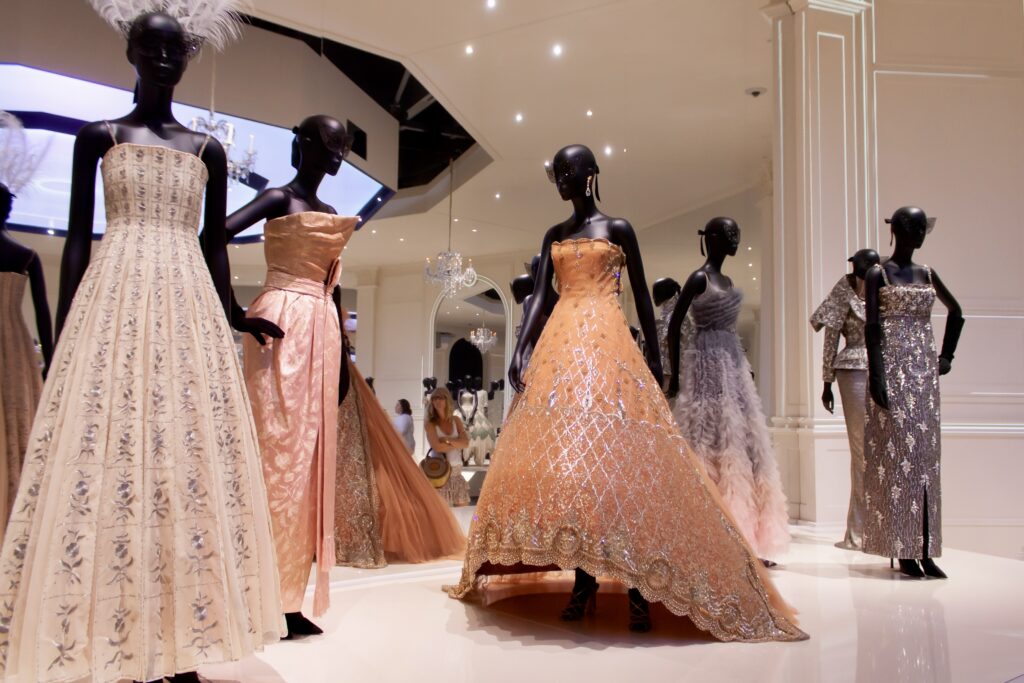
Theater and Performance Exhibits
Rooms 103-06 documents the history of live performance in the UK.
There are exhibits relating to all areas of performing arts, including drama, dance, opera, circus, puppetry, comedy, musical theatre, costume, set design, pantomime, and popular music.
You can expect to see items like Hamlet skulls, rock and roll posters, Vivien Leigh’s Cleopatra dress, Star Wars costumes, Shakespeare’s first folio, Peter Townsend’s smashed guitar, and Mick jagger’s jumpsuit. Oddly, there’s not much on The Beatles.
There’s also a fashion gallery, where you can explore the evolution of fashion over centuries. You will often find temporary exhibitions by designers like Dior or Chanel.
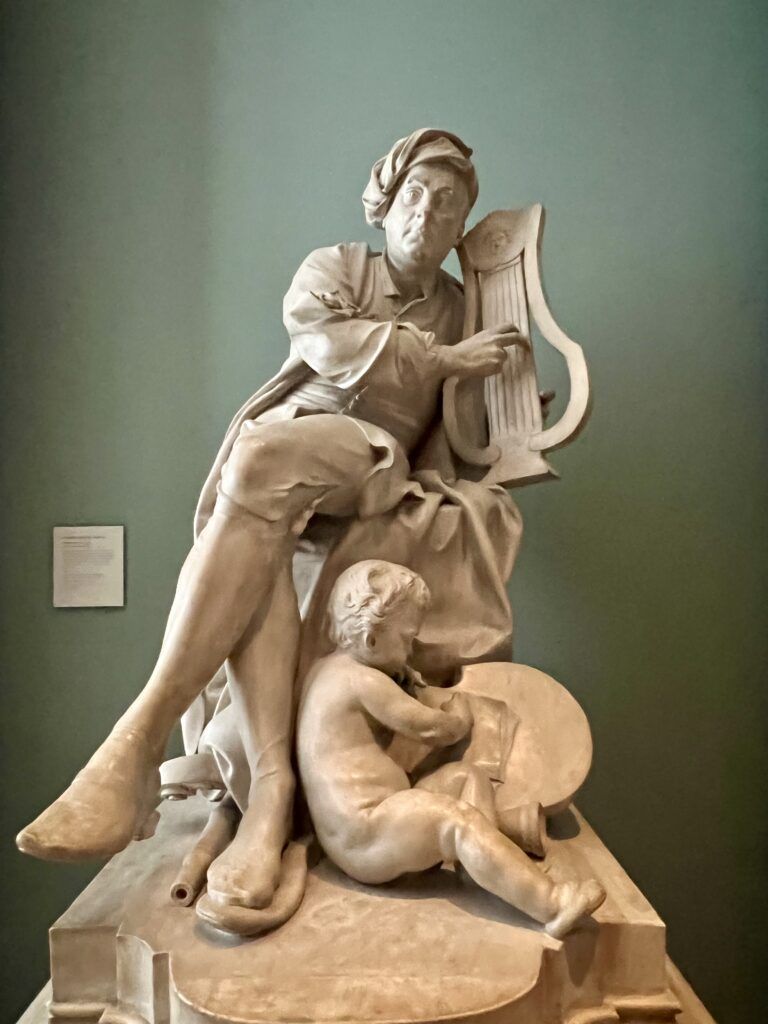
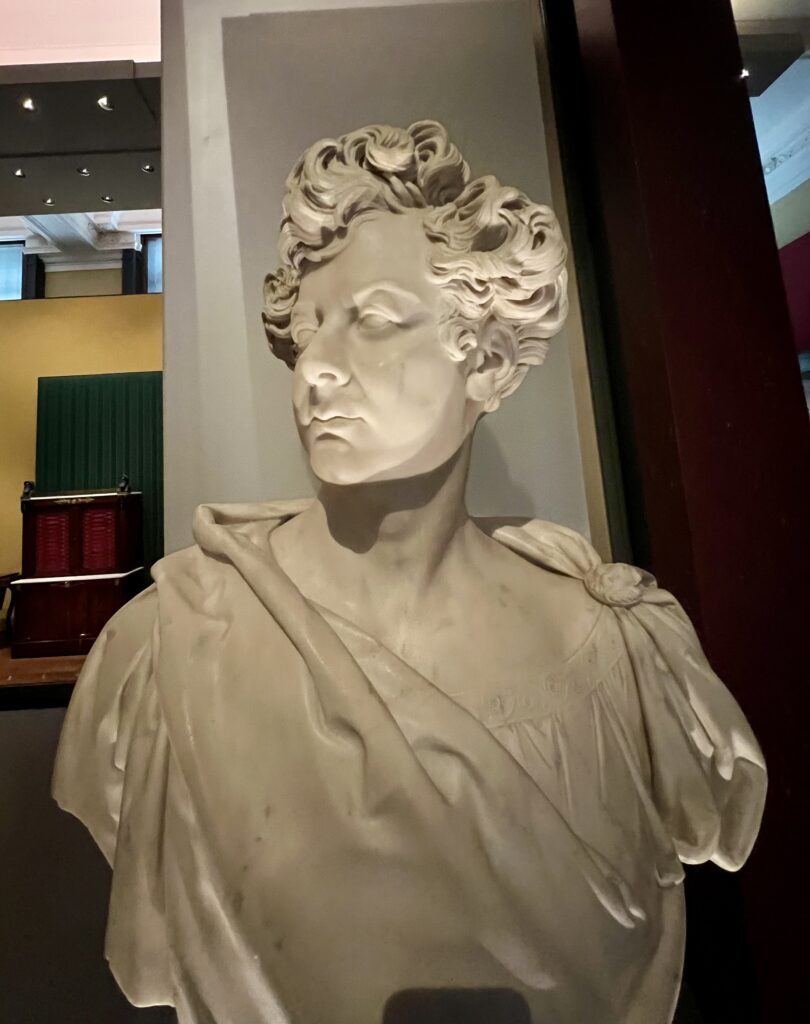
Practical Guide & Tips For The V&A
Address: Cromwell Rd, London SW7 2R. There are several entrances: (1) the grand entrance on Cromwell Road; (2) the main entrance on Exhibition Road; and the pedestrian tunnel from the South Kensington tube stop.
Hours: Open daily from 10:00 am to 5:45 pm.
Tickets: Admission is free. A separate charge may apply to temporary exhibitions. You’ll want to pick up a free map to carry with you.
Tours: You could also join one of the museum’s many themed guided tours.
Shop: The V&A has an absolutely fantastic museum shop. You can find for jewelry, ceramics, gifts, clothing, etc.
Pro Tips: If you are traveling with children, one of the most clever ways to see the museum is on the “Gothic Gallery Trail,” which is set up in a treasure hunt style.
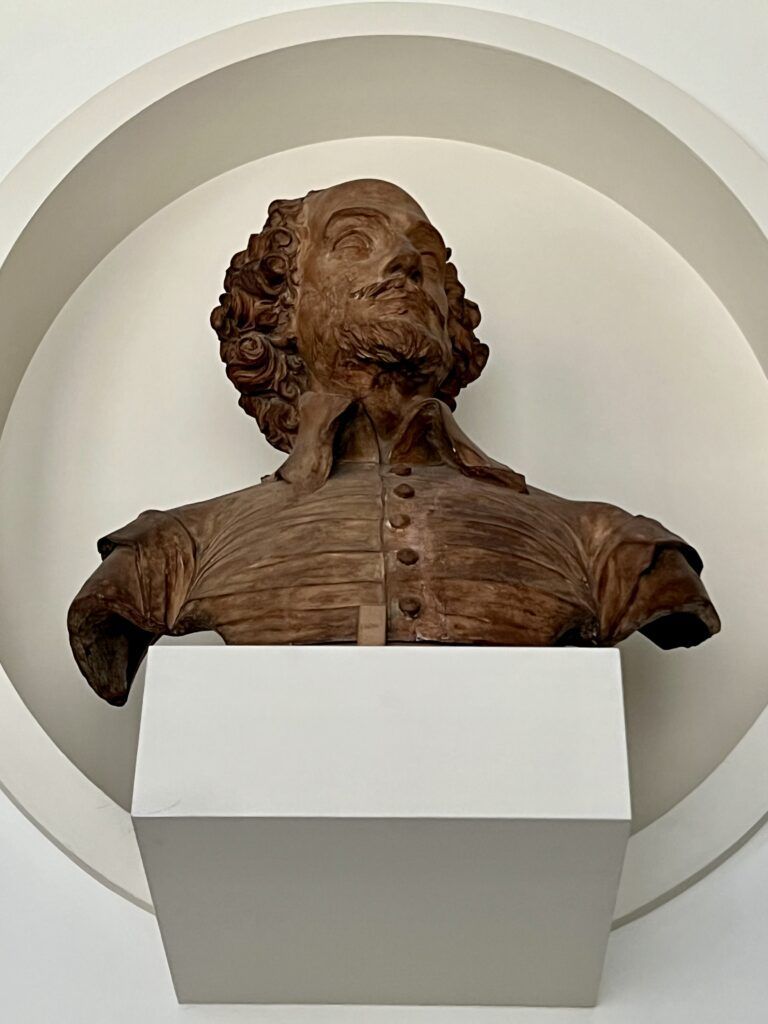
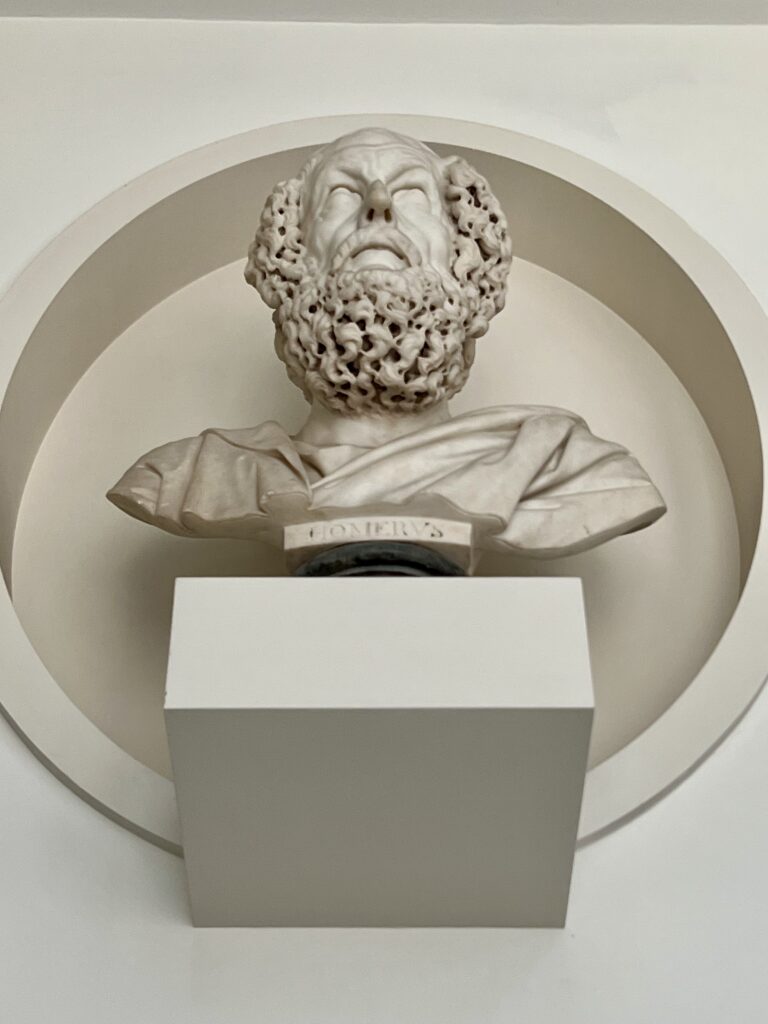
How Long To Spend:
As I mentioned above, you could spend all day at the museum. You may want to narrow down the exhibits you want to see if you only have 2-3 hours.
If you are staying in the South Kensington area (which I recommend!), maybe plan 2 separate visits to the museum.
Garden:
The John Madejski Garden is the V&A’s central courtyard, designed as a serene oasis in the heart of the museum. The garden features a large, circular fountain at its center, surrounded by smaller fountains.
There is ample seating area in the garden, both in the sun and shaded spots. This is an excellent spot for a picnic.
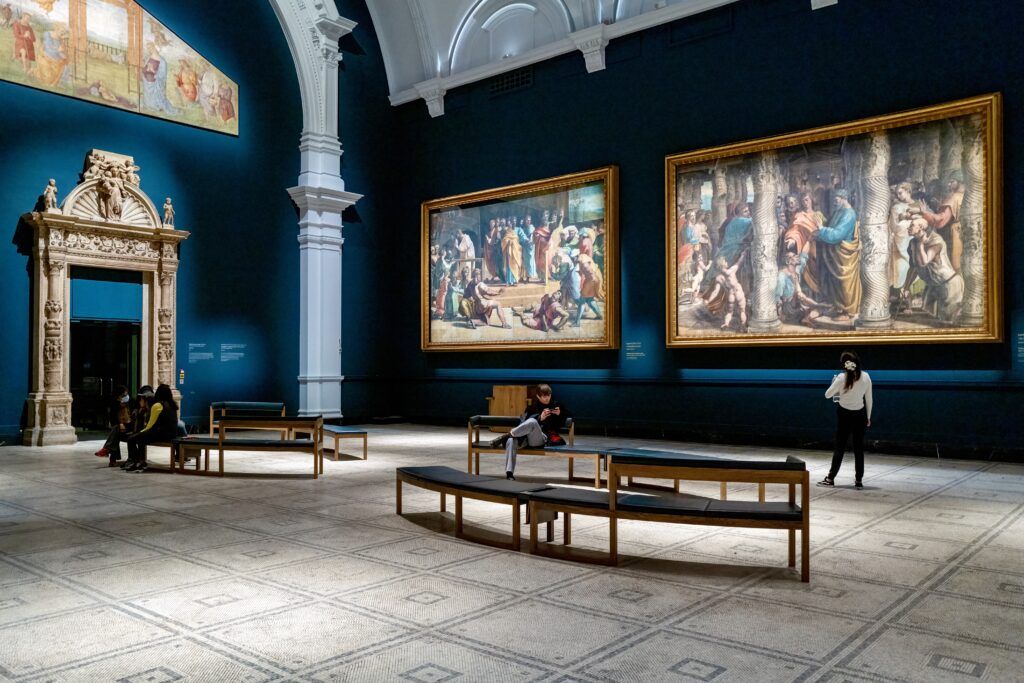
Cafes:
The V&A has a gorgeous main museum cafe. In fact, it was the world’s first museum cafe. It features decor by leading Victorian artists and offers a selection of teas, coffees, and cakes.
You can also eat at the Garden Cafe in one corner of the courtyard or the Courtyard Cafe at the Exhibition Road entrance.
I hope you’ve enjoyed my guide to the V&A. You may find these other London travel guides useful:
- 3 Day Itinerary for London
- 5 Day Itinerary for London
- Hidden Gems in London
- Tourist Traps To Avoid in London
- Best Museums in London
- Day Trips from London
- Harry Potter Places in London
- Guide to the Tower of London
- Guide to the Churchill War Rooms
- Guide To the National Gallery of Art
If you need a guide to the V&A, pin it for later.

